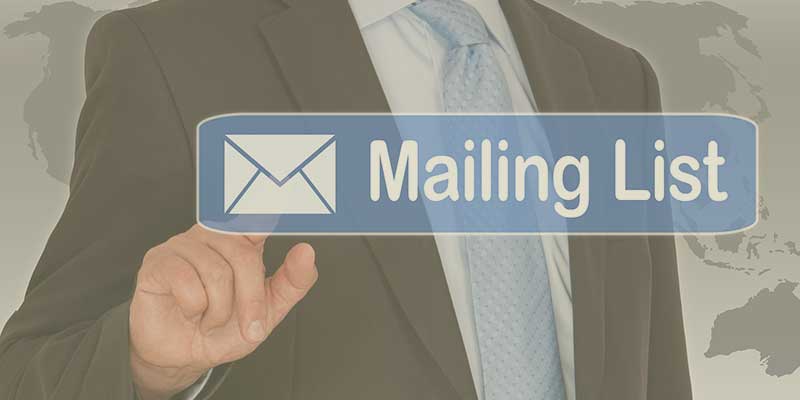“I have 185,000 Twitter followers. A tweet of content will get me around 20 clicks. Twenty bucks on a boosted Facebook post of the same content to 5,165 people who like the page gets even less. But a link in my newsletter? More than 2,000 clicks from an email list of less than 7,500.”
—Brian Clark, founder of Copyblogger.
So, what’s holding you back from starting your mailing list?
I think the primary causes of author reluctance are the 3 T’s:
- Time: All that writing and management of emails
- Talk: As in, what to talk about in your emails
- Technology: How to set up and use email marketing automation software
Let’s look at each individually.
1. Time
The time you choose to spend on this is entirely up to you. More time=more results. Minimal time=what you’re doing now. Those are the extremes, and you can pivot between them and increase time incrementally at your own pace.
You don’t need to blog or “do” social media or write a newsletter or write guest articles.
You do need to send emails to your list, at least occasionally. But it doesn’t have to look fancy. In fact, it’s better if it isn’t. The more personal and conversational, the better.
You do need to be mindful about increasing the numbers of people on your list. After all, that’s the point. Whether you do this manually or via automated means, your success as an author will correlate directly with the size of your list. That’s a fact.
2. Talk
The second most common protest I hear from reluctant authors is, what will I talk about?
In many ways, this goes hand-in-hand with Time because all authors hear the same advice: You need to write books, you need to engage on social media, you need to blog.
Here’s the email sign-up pitch from Indie/hybrid author Michael Sullivan (right side of blog):
“Sign up for my newsletter to get announcements about recent book releases, register for book and Tshirt giveaways, and to be informed about where I’ll be traveling to.”
That’s low-volume, low-effort talking.
The point is that you can choose what you want to talk about and how frequently.
My 3-step advice for developing a plan:
- Visit your book’s category on Amazon and find the top 20 or so best-selling books.
- Now research those authors to see if they have a mailing list and join it. Personally, I’d aim for a range of authors to learn from. The emerging author is probably doing everything herself, while someone like Stephen King has staff helping him. Both are instructive for our purposes.
- Now wait to see what shows up and how frequently.
After a month or two, you’ll have a better idea about what you could talk about and how often you should be emailing.
3. Technology
Okay, I know that technology can be daunting for some people. Unfortunately, it is a fact of life for self-publishers. Our success is tied to our use of the Internet, computers, and software programs.
Technology amplifies our marketing efforts; however, we don’t have to be geeks. The worst thing you can do is compare yourself to an accomplished, “out there” author you admire. They, no doubt, have been at it for a longer time and may even have help.
First, collect names and organize them by one or more classifications. See my previous article, The Four Email Lists Every Author Needs to Launch Their Book for how to categorize contacts.
Then get them into a tool. There are literally dozens of mailing list management tools available. You can even use Excel or Google Docs (both free online) to get started.
MailChimp is popular because it has a free plan (and a cute logo). When you outgrow that, you can pay monthly or buy credits to send less frequently. Constant Contact is also a long-time favorite. A commenter in my last post has had success with a small European-based email service.
The key is to start and build your confidence and skills over time through practice.

DAVID WOGAHN is president of AuthorImprints, a professional self-publishing services company. Wogahn has helped more than 100 authors and businesses establish their own publishing imprints, resulting in the successful publication of 250 books…and counting. He is the author of Register Your Book: The Essential Guide to ISBNs, Barcodes, Copyright and LCCNs, LinkedIn’s Lynda.com course Distributing and Marketing eBooks, and is a speaker for the Independent Book Publisher Association’s (IBPA) Publishing University.
Learn more at AuthorImprints or contact Wogahn at davidw@authorimprints.com or by phone at (877) 735-5269.

